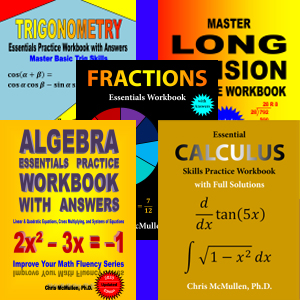Description
Price: $3.99
(as of Nov 06,2021 12:44:01 UTC – Details)
From the Publisher
An accessible guide to the physics of a possible fourth dimension of space by Chris McMullen, Ph.D.








a compact extra dimension
Volume 2 of The Visual Guide to Extra Dimensions explores the physics of a possible extra dimension of space.If there are extra dimensions, why don’t we see them?Do extra dimensions have to be compact?What does it mean for a dimension to be compact?How would the laws of physics be different if there are extra dimensions?These questions, and more, are explored in this volume.
generalizing the Pythagorean theorem to 4D space
An ordinary cube in 3D space has a body diagonal and a face diagonal. A right triangle formed by a body diagonal, a face diagonal, and an edge can be used to generalize the Pythagorean theorem to three dimensions.Similarly, a tesseract (which is a 4D hypercube) has a face diagonal, a body diagonal, and a hyperbody diagonal. Right triangles involving these diagonals can be used to generalize the Pythagorean theorem to 4D space. (The generalized formula turns out to be a pretty simple extension of the usual formula.)
Kaluza-Klein excitations
A particle propagating into an extra compact dimension would have Kaluza-Klein excitations.What are Kaluza-Klein excitations?Why would particles traveling in an extra compact dimension have them?Would physicists be able to detect Kaluza-Klein excitations?The answers to these questions help physicists place bounds on the possible sizes of extra compact dimensions.
an electric field map for an electric dipole
The usual laws of physics would be different if there are extra dimensions.If an extra dimension were just like the usual three dimensions, it would be obvious. Since we don’t notice any extra dimensions in everyday life (or even with precise measurements), if there are extra dimensions (such as those predicted by superstring theory), they must be different than the usual three.This volume explores how extra dimensions, compact or otherwise, would impact physics and how physicists might someday observe extra dimensions (if they exist).
Number of pages
165
218
92
40
40
425
ISBN
1438298927
1441497536
1941691323
1941691242
1941691927
1941691099
Description
An accessible introduction to a fourth dimension of space that is packed with illustrations and detailed explanations.
The second volume explores the physics of a possible fourth dimension of space. Why is a fourth dimension like the usual three a problem? What does it mean for an extra dimension to be compact?
A condensed introduction to the fourth dimension with color illustrations (unless you read the eBook version on a device that doesn’t have a color display).
Each page features fascinating color illustrations of a fourth dimension of space and a paragraph of text. Volume 1 focuses on 4D hypercubes and hyperspheres.
Volume 2 contains several unique depictions into what it might be like to live in a 4D world, from watching t.v. to playing chess.
Learn basic graph theory (no prerequisites) in the context of the surprisingly difficult-to-prove four-color theorem.




Improve Your Math Fluency
Chris McMullen, Ph.D.
Learn math from a university instructor with over 20 years of teaching experience.
Build Essential Math Skills
Practice solving problems that build essential math skills.Check your answers at the back of the book to ensure that practice makes perfect.
Develop Confidence
When you check your answer at the back of the book and discover that your solution is correct, this helps to build confidence.Fully solved examples and concise explanations help get you on the right path.
Find the subject that’s right for you.
Arithmetic
Prealgebra
Algebra
Geometry
Trigonometry
Logarithms
Calculus
Vector Calculus
Number of pages
207
202
206
172
186
337
ISBN/ASIN
1941691889
1941691897
1941691501
1512044288
B008G4OR1U
1941691145
Description
The geometry of lines, angles, transversals, triangles, quadrilaterals, polygons, medians, bisectors, and altitudes.
The geometry of circles, chords, sectors, segments, secants, tangents, inscribed angles, circumscribed polygons, inscribed polygons, and 3D shapes.
The art of writing proofs for geometry, from transversals to secants.
Solve a variety of pattern recognition puzzles.
An accessible introduction to essential astronomy concepts (includes space photos).
Trig-based physics (also available in a calculus-based version), Volume 1 (motion), covered in detail (motion, Newton’s laws, circular motion, work/energy, satellites, center of mass, collisions, rotation).








Reviews
There are no reviews yet.